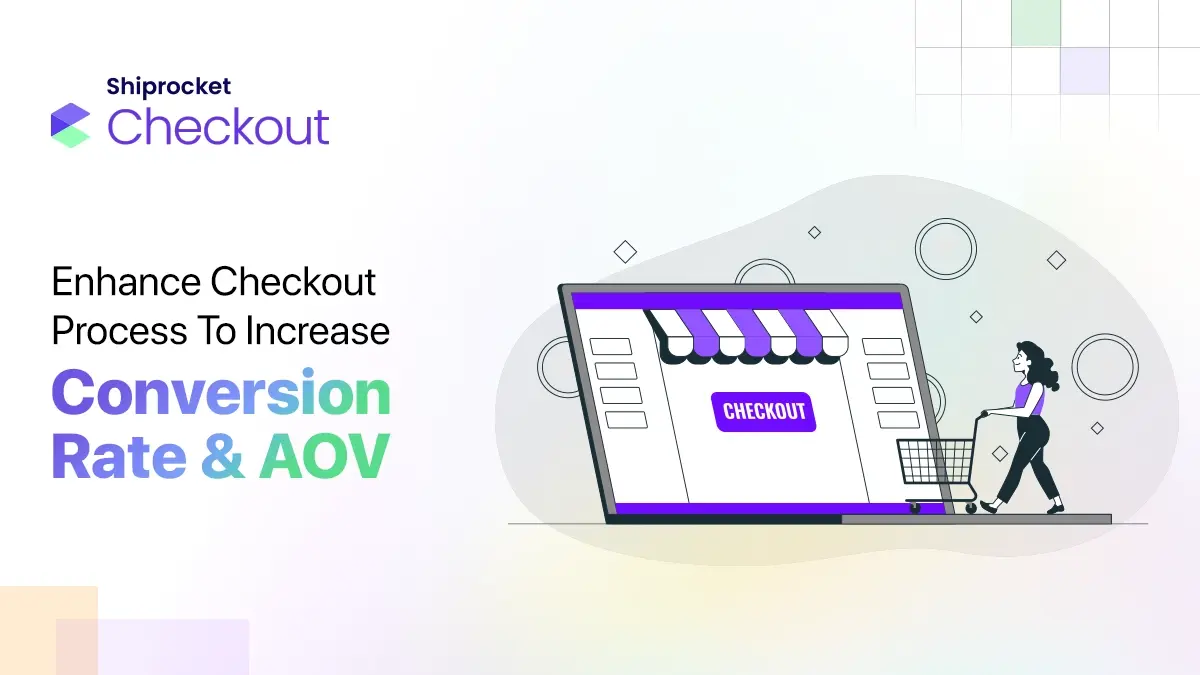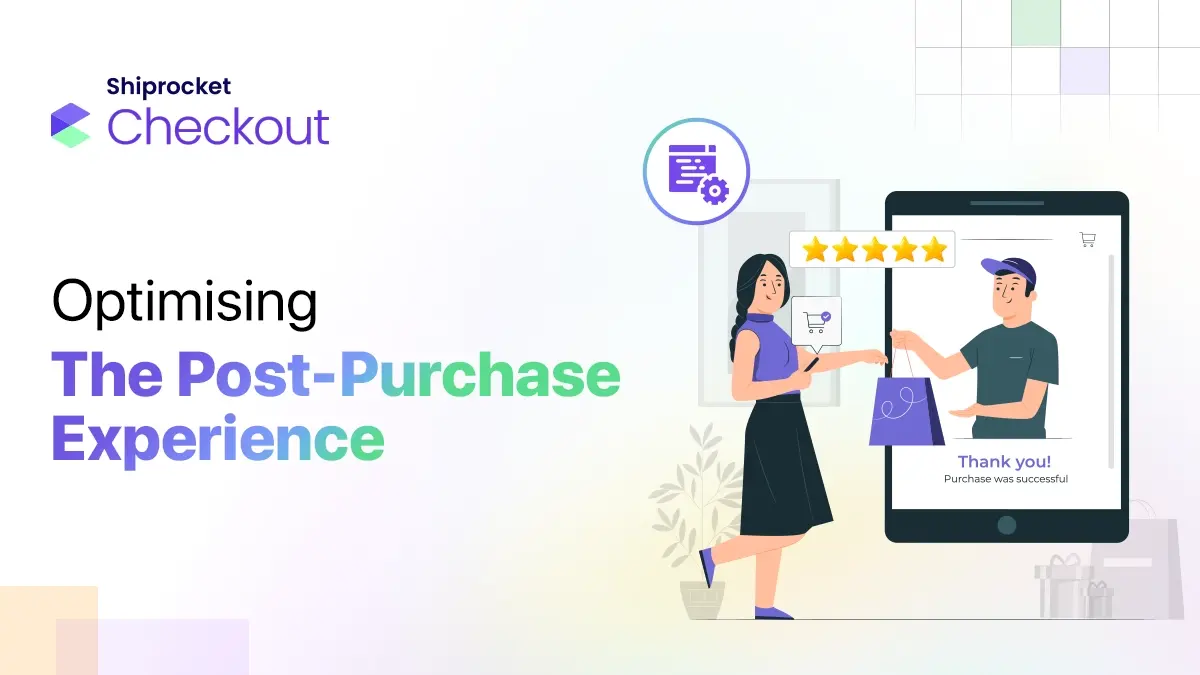Revolutionizing Cart Abandonment: Beyond Traditional Tactics for Success
Do your customers often ghost you? A customer is interested in one of your products but is unsure about the purchase. Your web analytics say they’ve usually flocked around the same product page. After much thought, this buyer finally adds the product to their cart. However, the item never makes it to the checkout, leaving you confused and disappointed.
Cart abandonment is a fairly typical story in the online business world. Research suggests that 70.19% of eCommerce shopping carts get abandoned.
Cart abandonment rates usually peak during the holiday season sales, as these offers attract many impulsive buyers. This ghosting could be a lack of purchasing intent or indecisiveness, which may be inevitable.
Sometimes, customers abandon their carts due to an inconvenient online shopping experience on your website. Fortunately, this type of damage can be controlled. However, many eCommerce brands face the challenge of employing an effective abandonment reduction strategy. Astonishingly, according to Forrester Research, eCommerce businesses lose a staggering USD 18 billion in annual sales revenue due to shopping cart abandonment.
This article will inform you about productive cart abandonment reduction strategies, helping you make more money.
7 Advanced Tactics to Bring Down Your Cart Abandonment Rate
You may have encountered ineffective cart abandonment tips, like staying mobile responsive, simplifying the design, and having progress indicators. Let’s go beyond the standard advice and look at some advanced cart abandonment reduction strategies for better results:
1. Optimised Checkout
Research by the Baymard Institute reveals that a better checkout design can help eCommerce companies increase their conversion rate by 35.26%.
Customers expect a smooth experience throughout your website, from browsing to checkout. Any friction in this journey may cost you sales or a potential customer. The best way to solve this problem is by optimising your checkout process. You can remove barriers and make this process smooth and user-friendly.
Here’s how you can streamline your checkout:
- Easy Login: Make the login hassle-free by offering your customers Single Sign-On (SSO) options. SSO lets them log in by entering their mobile number and one-time password (OTP). It saves them the time and effort to go through a long login process and encourages them to complete the purchase.
- Address Pre-fill Feature: Customers usually feel lazy to type in the whole address at checkout. Incorporate the address pre-fill function at checkout, which helps fill in the shopper’s address and billing details automatically. This shortens the checkout procedure and prevents potential cart abandonment.
- Multiple Payment Modes: Sometimes, they abandon the cart due to limited payment methods. People like having options for payment during checkouts like credit/debit cards or cash on delivery (COD). Besides these conventional methods, you must integrate popular payment gateways like UPI, digital wallets, and Pay Later. It gives your customers the flexibility to pay with the preferred payment mode, reducing the possibility of cart abandonment.
2. Checkout Discounts and Offers
Customers are attracted by the discounts they see as they open your website, but they often lose track of the discount code on their way to the checkout. This is where you run the risk of cart abandonment. The customers have to go all the way back to find the coupon code, and if they fail to do so, they abandon the cart or even leave the website.
At this point, checkout discounts or coupons become your saviour. Make the coupons available at the checkout to increase your conversion rate and average order values. This may also encourage more significant purchases while reducing the cart abandonment risk.
This is how you can implement this effective strategy:
- Personalised Deals: Personalisation attracts customers as you bond better with them. You can use previous customer data to offer customised discounts and deals to your customers at checkout. It lets you target a specific audience based on their preferences, purchase history, geographic location, or demographics.
You may further send emails, WhatsApp messages, etc., to emphasise the offer. These deals help encourage your customers to place an order.
- Enhancing Average Order Value: Suggest complementary products or upgrades to encourage customers to add more items to their cart. This way, you have a better chance of the customer completing the checkout process and boosting the average order value. It is also a good idea to observe your high-performing deals and repeat them often.
- Gamification: Make the checkout journey fun for your customers by gamifying your offers. Add scratch cards, spin-and-win wheels, or reward points to engage them. The thrill of earning rewards or winning discounts motivates the buyer to finalise the purchase.
3. Quick Customer Support
Customers might have questions about your product. For example, they may struggle to find the size chart or have difficulty understanding the features of your product. These concerns may affect their buying decisions and cause cart abandonment. A quick issue-fix with personalised responses can stop this from happening. Moreover, it enhances your brand’s image.
You may use the following strategies to provide personalised and prompt customer support:
- 24-hour Chat Feature: You can incorporate chatbots to assist your customers and answer their common doubts and queries instantly, even when your customer service executives are not around, resulting in quicker buying decisions and less possibility of cart abandonment.
- Multi-channel Communication: Shoppers have doubts! And doubts always bring in a plethora of questions about the product, its shape, size, return policy, functionality, etc. If these questions are left unanswered or even if the answers are available but not easily accessible, it will impact your shopper’s willingness to go ahead with their purchase. Multi-channel communication is the solution and has become important for eCommerce stores. Being available via email, phone chat, and social media gives your shoppers easy access to you and the answers they need to clear their doubts and make their purchases.
- Headless Checkout: Our digital life has become fast-paced and people constantly seek instant gratification. In these times, if the purchasing process takes your shopper through extra steps, it will put them off and give them time to doubt their desire to purchase, leading to more abandoned carts. Whereas if your shoppers can complete their purchase from the platform that they are using, it will make their whole experience quick and easy. This will generate positive emotions about your brand. A headless checkout does exactly this! Your shoppers can make their purchases quickly on whatever platform they are using, reducing their time to go through their inhibitions, thereby reducing your cart abandonments. You can do this by integrating built-in return-to-origin (RTO) intelligence that offers end-to-end shopping journeys within popular messaging apps like WhatsApp.
4. Establishing Trust with Product Reviews
If you are a new brand, you will face apprehension from your shoppers, even if they love your product on the first look. Building trust will turn potential buyers into buyers who pay. Product reviews are a great way to answer the question – “Can I trust them?” – that would be on every new buyer’s mind. Real people giving positive reviews validate your product and brand and help push your potential buyers into taking action.
Having no reviews makes it seem like no one wants to buy your product, leading the potential buyer to feel even more hesitant to buy from you. A report by PowerReviews says that nearly 99.9% of customers read reviews while shopping online.
The checkout page is the most crucial stage for you as a business, as this is where all the doubts of the buyer come flying to the surface. Either drop off or make the purchase here. Therefore, placing the best product reviews on your checkout page can clear their doubts and push them to make the purchase.
5. Offer a Solid Returns Policy
A big problem with online shopping that cannot be solved (at least for the moment) is the intangibility of the product. “What if it looks different in real life?” “What if the size is wrong?” “What if I don’t like the material?” These questions are inevitable when it comes to online shopping especially when the buyers want to buy an expensive product. An effortless return and exchange policy is the first thing that buyers look for, and if it is not available, they will simply not buy. The more easy, accessible, and straightforward your policy is, the easier it will be for the customer to feel safe and make the purchase.
Research indicates that 76% of customers believe that free returns are essential for online shopping. Free returns make your buyers feel safe and show how much confidence and trust you have in your own product that you are willing to take the risk away from the customer and put it onto yourself.
6. Transparency in Delivery Expectation
You have the opportunity to build trust and transparency with your client very early on in the customer journey by stating your expected delivery times. For example, Minus 30, a vegan ice cream company states at the very top of their website page that they offer “same-day delivery for orders placed before 4:30 pm”. This up-front honesty makes it easy for the buyer to make a decision on when to order and even if they don’t place an order on that very day, they are sure to come back to order at a time that works for them.
7. Exit-intent Popups
How do you know why a potential customer abandoned their cart? You can guess the reasons but they wouldn’t be as accurate as gathered data. Exit-intent pop-ups help you directly ask the customer why they didn’t make their purchase. This will give you a very tangible way to quickly improve your services and minimise future cart abandonment. This method allows you to conduct the survey and collect helpful data while also allowing you to give your potential buyer one last push to complete their purchase. You can offer them a reward, such as a discount for completing the survey, which will compel them to buy another time and give you the data you need to improve.
Shiprocket Checkout: Reducing Cart Abandonment and Propelling Conversions
Shiprocket Checkout, trusted by millions, helps you convert prospects into loyal customers in just 40 Seconds. Keep your customers returning with a 70% faster checkout, 30% RTO reduction, 60% higher conversions, and 25% lesser cart abandonment.
Partner with us to access exceptional benefits like the following:
- We provide a one-click checkout for a delightful shopping experience for your customers.
- Streamline your business with analytics that help you understand your customers’ purchasing behaviour.
- Get more than 10,000 unique discount configurations.
- Increase your earnings with configurable tools to minimise returns.
- Personalised checkout with a SaaS tool to manage your customers’ checkout experience.
Conclusion
Monitoring the collected data and numbers is important to improve client servicing. There can be several reasons for people abandoning their carts, so you must establish key performance indicators and constantly monitor and analyse them. This will help you come up with effective strategies for growing and improving your customer relations.
Moreover, frequently conducting A/B tests and experimenting with methods like heat maps help shed light on consumer behaviour, and can give you a very clear path to refining their user journey.
Most customers repel the idea of creating an account when shopping online. So, enabling a guest check-out can help avoid cart abandonments by implying that you value your customer’s precious time.
People hesitate to add credit/debit card details or other personal information on any website. A trust badge is a digital icon to showcase on your eCommerce website to reassure visitors of the site’s authenticity and the secure collection of their data by third-party services.
Divide the sum of completed transactions by the number of initiated sales (adds to the cart). Then subtract the total from one and multiply it by 100 to calculate your abandonment rate. You may also use an abandonment rate calculator for this process.



